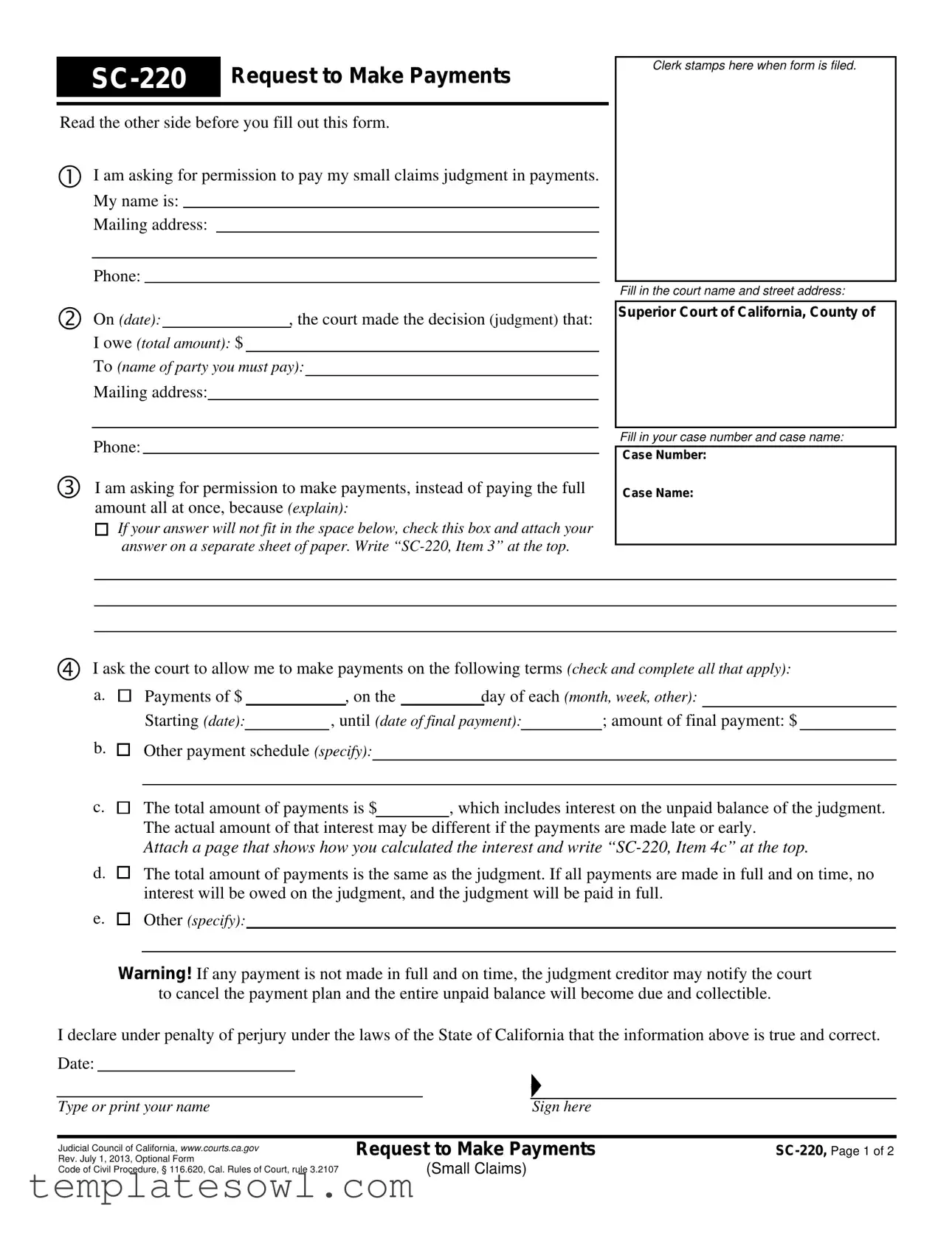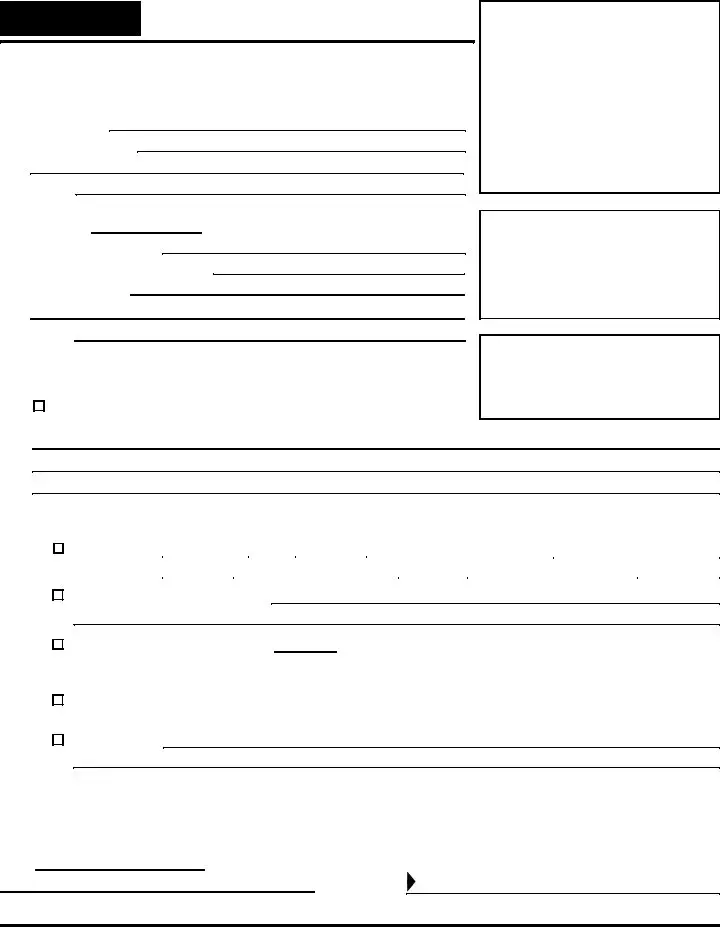What is the SC-220 form used for?
The SC-220 form, titled "Request to Make Payments," is used by individuals who have been ordered to pay a small claims judgment. This form allows them to request permission from the court to make payments over time rather than settling the entire amount at once. This flexibility can be beneficial for debtors who are experiencing financial difficulty.
Who should fill out the SC-220 form?
The form should be filled out by a person identified as the judgment debtor, which is the party required to pay the judgment amount. Each debtor must submit a separate SC-220 form for each creditor they owe money to, thus ensuring that the court manages each case individually.
What information is required on the SC-220 form?
Debtors will need to provide personal information, including their name, mailing address, and phone number. They must also include details about the court judgment, such as the date of the judgment, the total amount owed, and the name and contact information of the creditor. Additionally, they will outline their proposed payment plan and any calculations regarding interest that might apply.
How do I submit the SC-220 form?
Once you have completed the SC-220 form, you must file it with the small claims court clerk. Along with this form, be sure to complete Form EJ-165, the Financial Statement. The clerk will then mail copies of these forms to the other parties involved in the case. This process ensures transparency and gives those parties an opportunity to respond to your request.
What happens after I file the SC-220 form?
After submission, the court will review your request. The other parties involved will have ten days from the date on the Clerk’s Certificate of Mailing to respond. You may receive either a decision on your request or notice of a hearing if there are disputes regarding the proposed payment plan.
Can the creditor object to my payment request?
Yes, if the judgment creditor disagrees with your payment request or wishes to receive interest, they can file a response within ten days. Their response could lead to a court hearing where both parties can present their arguments. If you do not respond to their objection, the court may allow your request to make payments without any consideration of their concerns.
Is interest applied to the judgment amount if I make payments?
Interest at the rate of 10 percent per year is typically added to the unpaid judgment amount until it is fully paid. However, when a court allows a payment plan, it may not impose interest if the debtor makes all payments in full and on time. If any payments are late or insufficient, the court may reinstate accrued interest on the unpaid balance.
How is interest on the judgment calculated?
If your proposed payment plan includes interest, you should provide a clear breakdown of how the payments will be divided between principal and interest. Using an online amortization calculator can help you derive these figures. Include the details alongside your payment request for clarity and transparency.
Can I get help with completing the SC-220 form?
Absolutely! Many counties offer resources and small claims advisors who can assist you in completing this form correctly. You can find local assistance by visiting your county's court website or checking the resources available at www.courts.ca.gov/selfhelp-smallclaims.htm. Don’t hesitate to seek help if you have questions about the process.


